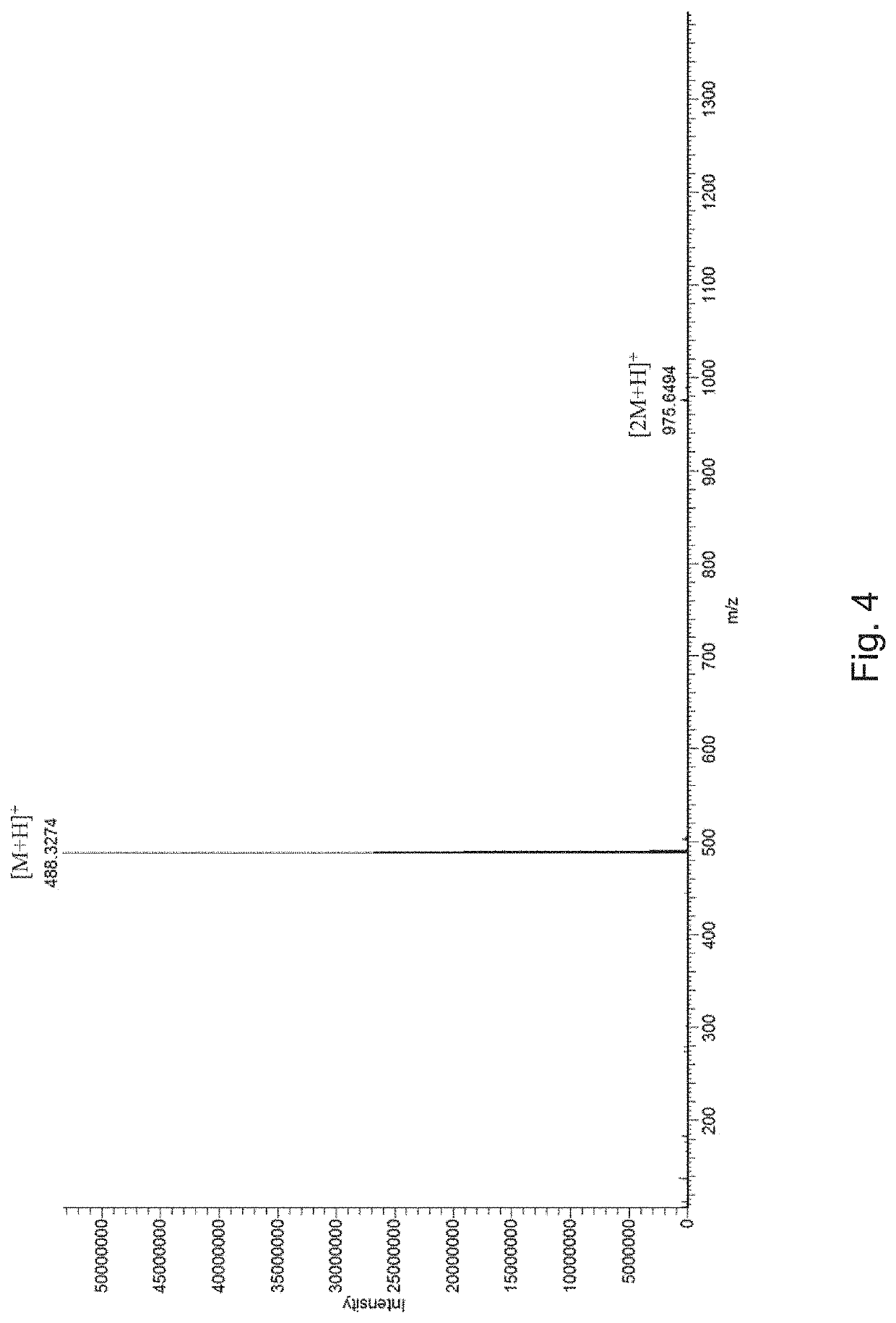Prenyltransferase and application thereof
a technology of prenyltransferase and psl, which is applied in the field of new phytoenesynthaselike (psl) family of prenyltransferase, can solve the problem of difficult chemical method synthesizing of thes
- Summary
- Abstract
- Description
- Claims
- Application Information
AI Technical Summary
Benefits of technology
Problems solved by technology
Method used
Image
Examples
embodiment 1
f Isopentenyl Transferase
[0024]1. Extraction of Genomic DNA
[0025]Streptomyces youssoufiensis 01106819 was cultured in liquid TSBY medium (3% tryptic soya both, 103% sucrose, 0.1% tryptone, 0.05% yeast extract) at 30° C. for genomic DNA extraction. Cells were harvested by centrifugation (1 min, 17000×g), and washed (1 mL of STE buffer). 500 μL of lysis solution (3-5 mg / mL lysozyme in STE buffer) was added and incubated at 37° C. until cells became translucent; 250 μL of 6% SDS was then added with further incubation at 37° C. until cells became clear; after addition of ten percent 3 M NaAc (pH 4.8) and 200 μL of a mixture of phenol:chloroform:isoamyl alcohol (25:24:1; v / v / v), the sample was rotated end-over-end for 10 min; after centrifugation (5 min, 17000×g), the aqueous phase was transferred with wide bore pipet into a clean tube. DNA was precipitated by equal volume of isopropanol and spooled using a sealed Pasteur pipet before being transferred into a microcentrifuge tube and rin...
embodiment 2
ay of DmtC1
[0034]The enzymatic assay of DmtC1 was carried out in 50 mM Tris-HCl buffer (pH 8.0) with 2.5 mM MgCl2, containing 10 μM DmtC1, 1 mM DKP, and 0.2 mM FPP. The optimal assay conditions were obtained at 30° C. After 1 hr, the reaction was quenched by, the addition of equal volume of methanol and mixed by vortexing. The mixture was centrifuged at 17,000×g for 20 min to remove protein.
[0035]The supernatant was then subjected to HPLC analysis using a YMC-Pack ODS-AQ C18 column (150 mm×4.6 mm, particle size of 5 μm, pore size of 120 Å) under the program: phase A consisting of 0.1% (v / v) formic acid and ddH2O, phase B consisting of 0.1% (v / v) formic acid and acetonitrile; 10% B (0-5 min), 10% to 50% B (5-15 min), 80% to 100% B (15-25 min), at a flow rate of 1 mL min−1 and UV detection at 300 nm. As shown FIG. 3, a new absorption peak appeared after the reaction, indicating that the enzymatic reaction occurred.
[0036]The obtained product was subjected to high resolution mass spectr...
embodiment 3
trate Promiscuity of DmtC1
[0037]When cWP was used as the substrate, the FPP in the enzymatic assay in the embodiment 2 was replaced with DMAPP, GPP or GGPP. HPLC (FIG. 6) and HR-MS analysis (FIGS. 7-8) were performed after the reaction is terminated. [M+H]+ of compound 5 in panel iii is 420.2647, which is consistent with molecular weight of GPP-cWP ([M+H]+ calcd 420.2606) (FIG. 7); [M+H]+ of compound 6 in panel v is 556.3896, which is consistent with molecular weight of GGPP-cWP ([M+H]+ calcd 556.3858) (FIG. 8). It is proved that DmtC1 displays broad substrate specificity regarding to the prenyl donors and could be a powerful biocatalytic tool enzyme for combinatorial biosynthesis of terpenylated diketopiperazines.
PUM
 Login to View More
Login to View More Abstract
Description
Claims
Application Information
 Login to View More
Login to View More - R&D
- Intellectual Property
- Life Sciences
- Materials
- Tech Scout
- Unparalleled Data Quality
- Higher Quality Content
- 60% Fewer Hallucinations
Browse by: Latest US Patents, China's latest patents, Technical Efficacy Thesaurus, Application Domain, Technology Topic, Popular Technical Reports.
© 2025 PatSnap. All rights reserved.Legal|Privacy policy|Modern Slavery Act Transparency Statement|Sitemap|About US| Contact US: help@patsnap.com



